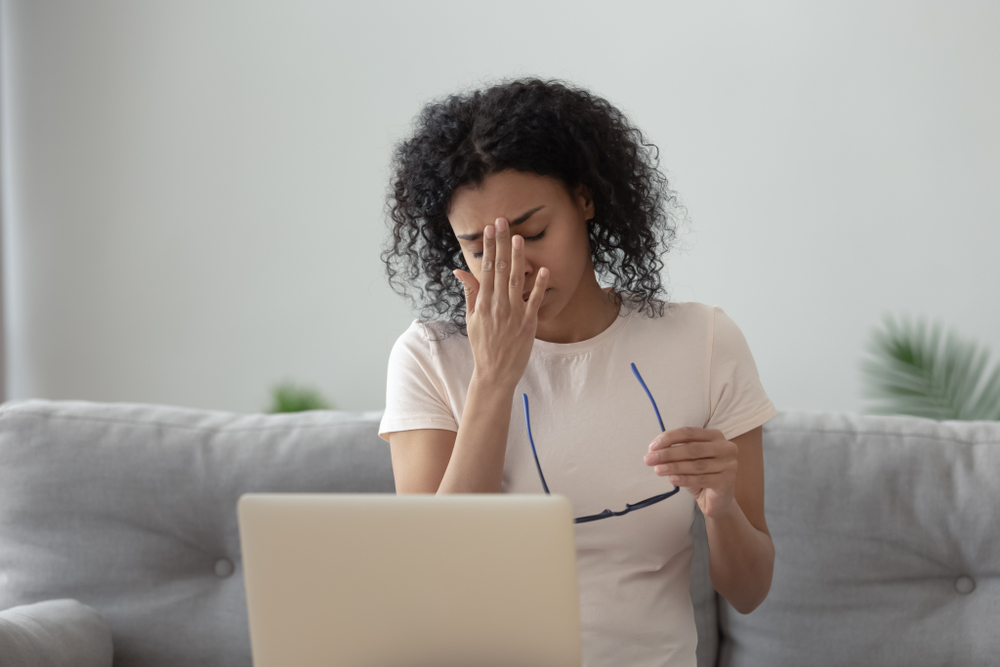
We live in a world where screens are an integral part of daily life. While these advancements have made life more convenient, they can come with a cost – one that your eyes are paying. The reality of digital eye strain and dry eye has become prevalent, warranting a deeper understanding of these conditions.
What Causes Digital Eye Strain?
When you stare at a screen, whether it's a computer, smartphone, or another digital device, you're exposed to blue light. This type of light has shorter wavelengths and more energy, which can be harder on the eyes than other types of light.
Another contributing factor is the reduced blinking rate that occurs when you focus on a screen. Normally, you blink about 15 times per minute, but studies show that this rate can be cut in half when using digital devices. This reduced blink rate affects tear production and can lead to dry, irritated eyes.
Additionally, the way you position yourself in relation to your screen plays a role. Poor posture, improper screen distance, and suboptimal lighting conditions can all contribute to the strain you experience. All these factors, combined with the amount of time spent in front of screens, culminate in the phenomenon of digital eye strain.
Symptoms of Digital Eye Strain
Recognizing the symptoms of digital eye strain is key to addressing the problem. You might notice your eyes feeling sore, tired, or burning after prolonged screen use. It's common to experience blurred vision or difficulty focusing, which can be particularly frustrating when trying to work or enjoy leisure activities.
Headaches are another frequent symptom associated with digital eye strain. They often occur after long periods of concentrated screen time and can range from mild to severe. You might also notice that your eyes are red or that you're more sensitive to light than usual.
Additionally, you may experience neck and shoulder pain due to poor posture while using your devices. These physical symptoms are your body's way of signaling that it's time to take a break and reassess how you're engaging with your digital environment.
The Impact of Digital Eye Strain on Dry Eye
The decreased blink rate associated with screen use means that your eyes are not being sufficiently lubricated by tears. This lack of lubrication can exacerbate the symptoms of dry eye, making your eyes feel more uncomfortable as you continue to use digital devices.
It's also worth considering the long-term effects of blue light exposure on your eye health. While more research is needed, there is concern that prolonged exposure to blue light could damage retinal cells. This potential damage could contribute to worsening dry eye symptoms and even lead to other eye health issues over time.
Strategies for Minimizing Discomfort from Digital Eye Strain
Adopting strategies to minimize discomfort from digital eye strain is essential. One effective approach is to follow the 20-20-20 rule. Every 20 minutes, take a 20-second break to look at something 20 feet away. This simple habit can help reduce eye fatigue and encourage a more regular blinking rate.
Adjusting the brightness and contrast settings on your screen can also make a big difference. Your screen should not be much brighter than the surrounding environment. Furthermore, consider using a matte screen filter to reduce glare, which can cause your eyes to work harder than necessary.
Another strategy is to ensure that your workstation is ergonomically set up. The top of your computer screen should be at or slightly below eye level. This positioning encourages a slight downward gaze, which is more comfortable for your eyes and can reduce the surface area exposed to the air, thus slowing tear evaporation.
When to See an Optometrist
Knowing when to see an optometrist for digital eye strain can prevent the condition from worsening. If you've implemented various strategies and still experience persistent discomfort, blurred vision, or headaches, it's time to seek professional help.
An optometrist can conduct a comprehensive eye exam to rule out other causes of your symptoms and offer solutions tailored to your situation. They might suggest prescription glasses with lenses that block blue light or provide better focusing power, which can significantly alleviate digital eye strain symptoms.
Conclusion
In the digital age, your eyes are subject to unprecedented demands. Recognizing and addressing digital eye strain and dry eye is crucial for maintaining both your eye health and your overall well-being. By understanding the causes and symptoms, adopting strategies for minimizing discomfort, and seeking professional advice, when necessary, you can protect your eyes from the adverse effects of screen time.
For more information on dry eye and digital eye strain, visit Eyes on You, PC, in our Portland, Oregon office. Please call (971) 252-7500 to book your appointment today.












